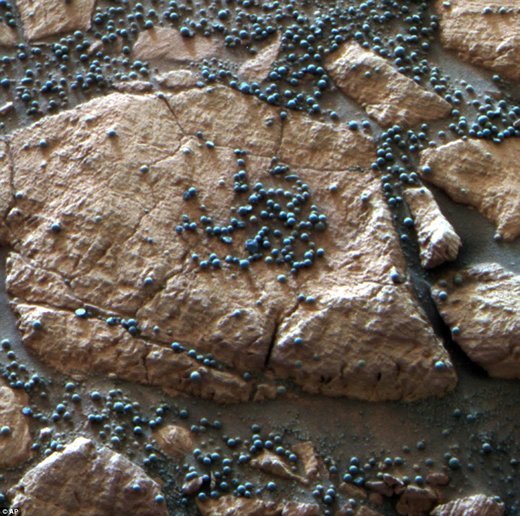
40 years ago, the twin Viking orbiters-and-landers were humanity's greatest, most ambitious missions to explore the red planet. They both arrived at Mars in 1976, less than a year after launch due to careful timing of Earth's orbit relative to Mars. While the orbiters constructed the first complete surface maps, discovering strong evidence of Mars' watery past, the Viking 1 lander touched down on July 20, 1976, with Viking 2 following suit six weeks later. For the first time, we were about to discover what the surface of the red planet was like, and it would be our best data until the 1990s.
Most exciting of all? There were three experimental tests for life the landers were set to perform, and if any of them came back positive, we were set to ring the alarm bells and pop the champagne: we would conclude that Mars was inhabited.
The three experiments were as follows:
- The Gas Chromatograph — Mass Spectrometer (GCMS), which would heat the soil to varying temperatures and measure the molecules that turned into a gaseous form, capable of measuring a huge variety of molecular compounds down to densities of a few parts-per-billion.
- The Gas Exchange (GEX) experiment took an incubated sample of Mars soil and replaced the Martian atmosphere with helium, an inert gas. They then applied both nutrients and water, and looked for signatures of biological activity: absorption or emission of oxygen, carbon dioxide, nitrogen, hydrogen and methane.
- The Labeled Release (LR) experiment took a sample of Martian soil and applied a drop of nutrient solution to it, where all of the nutrients were tagged with radioactive carbon-14. Radioactive carbon-14 would then be metabolized into radioactive carbon dioxide, which should only be detected if life were present.
The first test was performed first, and came back negative. The second test was next, and also came back negative. By time the third test was performed, with both landers in situ, the prospects were pretty grim, but the data was taken anyway. To the surprise of almost everyone, both Viking 1 and 2 detected metabolized, radioactive carbon-14 as part of the carbon dioxide emitted. They even took their samples from different locations: one from soil in direct sunlight, the other from soil found under a rock. In both samples, the carbon dioxide emission was immediate and sustained after the first injection. To great excitement and fanfare, the team led by Gilbert Levin thought they had their first signature of life on Mars.
The team held their breath as the control experiment was performed, and this is where things get fishy. Subsequent injections of radioactive nutrients failed to produce any response; what we were seeing was consistent with either organic or purely chemical, inorganic processes. Perhaps there wasn't life on Mars, after all. Despite the initial declaration — that if any of the three tests came back positive, we'd announce life on Mars — these results seemed to be inconclusive. In the forty years since, we've never replicated the experiment, and we still don't know for certain.
The closest we came was in 2008, when the Mars Phoenix lander detected perchlorates in the soil, which could have been the cause of the first positive reading in the LR experiment. When heated, perchlorate can — in the presence of certain chemical compounds — produce chloromethane and dichloromethane, the exact compounds Viking 1 and 2 detected. But were those chemical compounds organic in nature, or were they inorganic? Were they produced biologically, or abiotically? As it turns out, both explanations work: Martian soil exposed to intense UV radiation could have made those compounds without the need for life, or biological lifeforms could have done it.
Forty years ago, for the first time, a spacecraft from Earth willfully landed on the Martian surface, and looked for signs of life. One of the experiments came back with a positive result, and those results are still open to interpretation. The question of whether there's microscopic life on Mars is still an open, unanswered one, as no strong conclusion has been reached either way. This is one question that a crewed mission to Mars — with a human brain's worth of resourcefulness — could answer far more robustly than any robotic mission ever could. Perhaps, in the next decade or two, we'll finally have the answer to the biggest question raised by the first Martian laboratory ever.
Astrophysicist and author Ethan Siegel is the founder and primary writer of Starts With A Bang. Follow him on Twitter, Facebook, G+, Tumblr, and order his book: Beyond The Galaxy, today!



Reader Comments
to our Newsletter